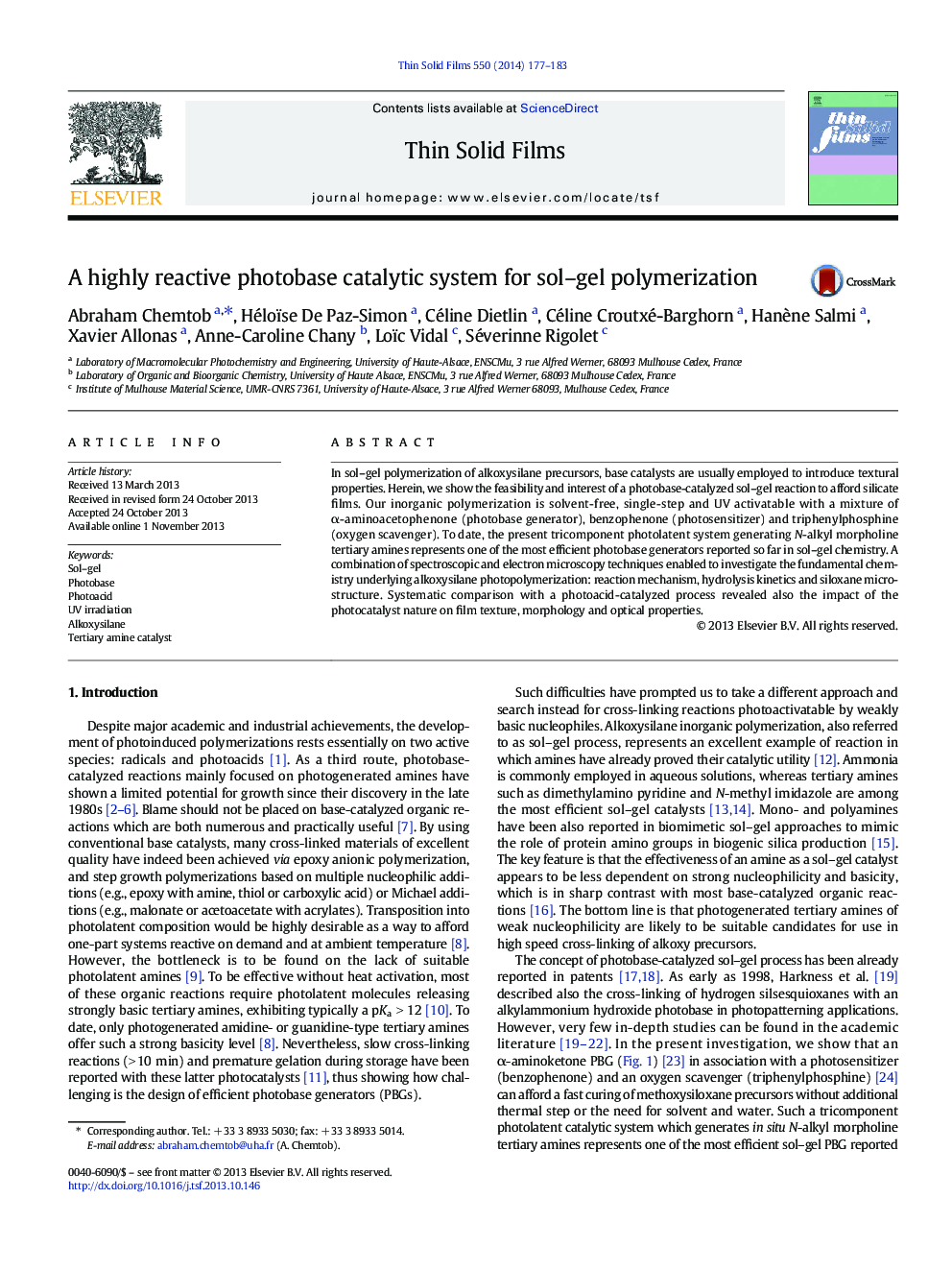| Article ID | Journal | Published Year | Pages | File Type |
|---|---|---|---|---|
| 8035402 | Thin Solid Films | 2014 | 7 Pages |
Abstract
In sol-gel polymerization of alkoxysilane precursors, base catalysts are usually employed to introduce textural properties. Herein, we show the feasibility and interest of a photobase-catalyzed sol-gel reaction to afford silicate films. Our inorganic polymerization is solvent-free, single-step and UV activatable with a mixture of α-aminoacetophenone (photobase generator), benzophenone (photosensitizer) and triphenylphosphine (oxygen scavenger). To date, the present tricomponent photolatent system generating N-alkyl morpholine tertiary amines represents one of the most efficient photobase generators reported so far in sol-gel chemistry. A combination of spectroscopic and electron microscopy techniques enabled to investigate the fundamental chemistry underlying alkoxysilane photopolymerization: reaction mechanism, hydrolysis kinetics and siloxane microstructure. Systematic comparison with a photoacid-catalyzed process revealed also the impact of the photocatalyst nature on film texture, morphology and optical properties.
Related Topics
Physical Sciences and Engineering
Materials Science
Nanotechnology
Authors
Abraham Chemtob, Héloïse De Paz-Simon, Céline Dietlin, Céline Croutxé-Barghorn, Hanène Salmi, Xavier Allonas, Anne-Caroline Chany, Loïc Vidal, Séverinne Rigolet,
